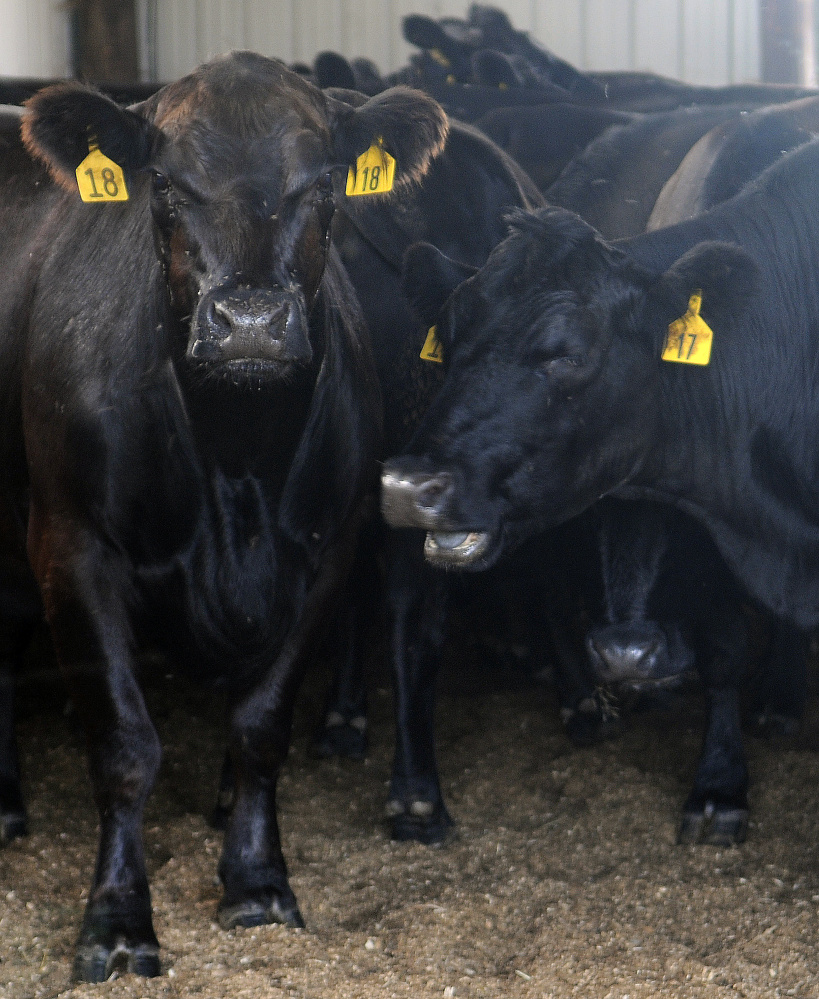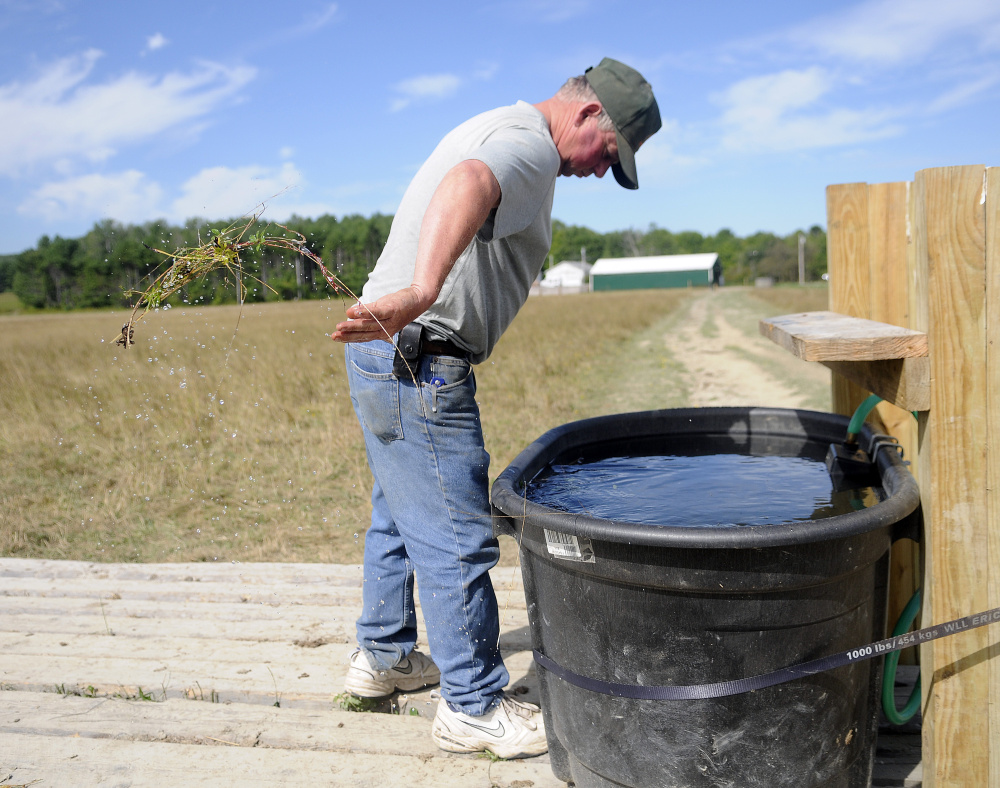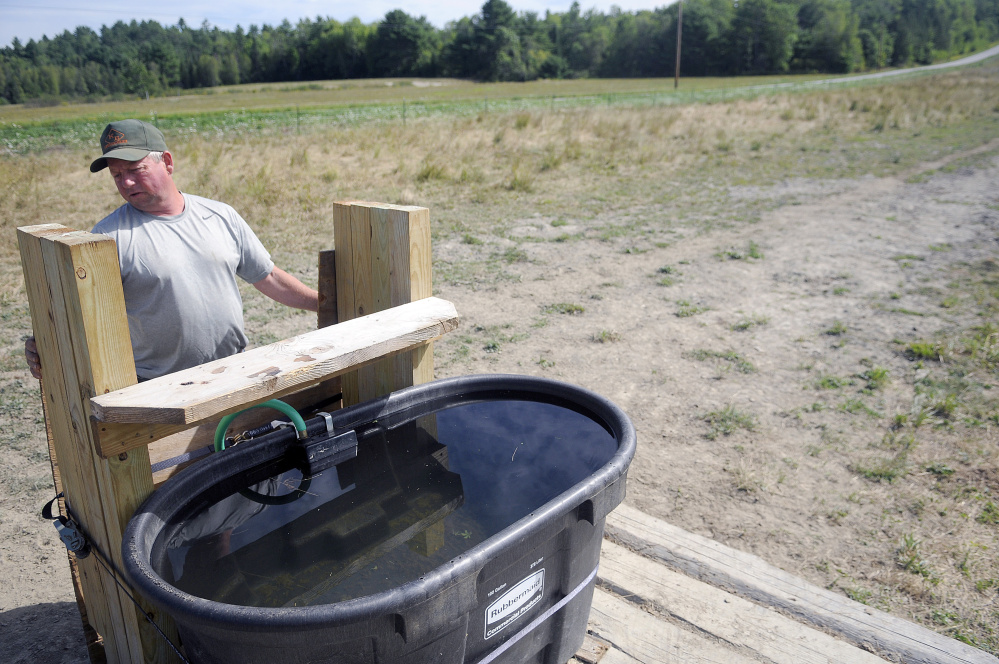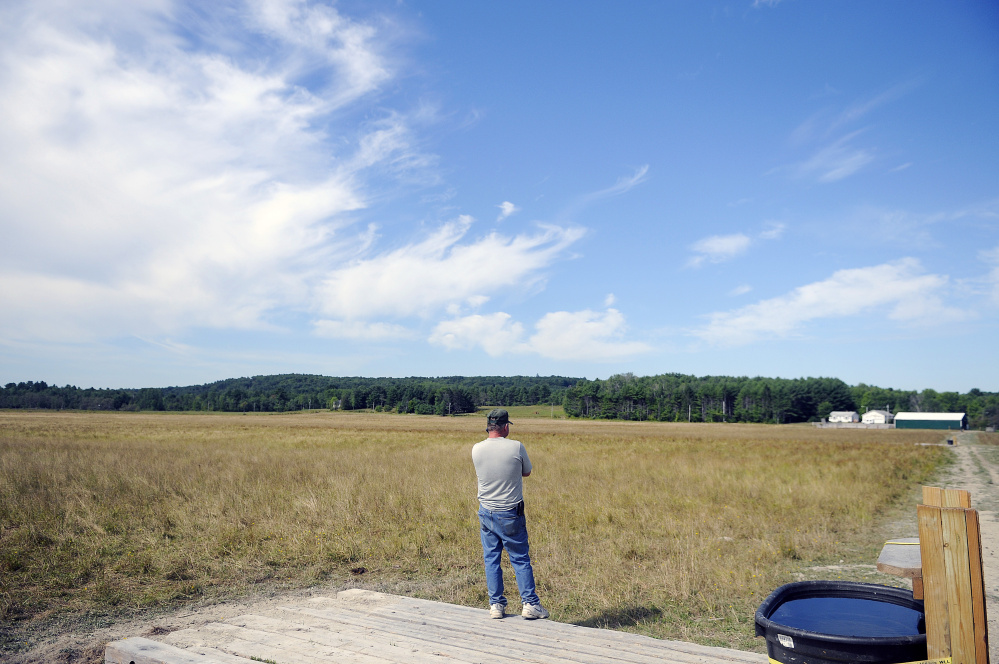As the calendar changes from August to September and summer inches closer to fall, farmers throughout the state still are dealing with what at least two farmers said was the worst drought conditions they’ve ever seen.
“This is the worst I’ve ever seen, for sure, and this is the driest year I’ve seen in my lifetime,” said Pete Kelley, of Kelley Bros. Farm. Kelley has about 35 to 40 cattle on his farm in Pittston, and earlier this summer, his well went dry.
“I took a hose and went about 2,100 feet down to fill a water tub so the cows have water at all times when they need it,” Kelley said.
The conditions, considered to be “abnormally dry” in most of Kennebec County, according to the U.S. Drought Monitor’s website, have had a big effect on the hay crop statewide, including Kelley’s farm.
“The first crop was pretty good, but the second hay crop is way down,” Kelley said. “We usually get about 300 bales of hay in our second crop, but I’ll be lucky if I get 100 bales this year.”
That doesn’t affect Kelley much from a financial standpoint because he doesn’t really sell his hay; he mostly uses it to feed his livestock. But Scott Herrick, of Hornbeam Mountain Farm in Mount Vernon, is looking at a significant hit to his bottom line.
“Normally, I’d see a 50 percent drop from the first crop to the second crop on one particular field,” Herrick said. “On this field, I got 600 bales with the first crop and just 128 the second time. It’s almost cost-prohibitive when you factor in labor and fuel costs.”
Because of good weather, the first crop was great, said Richard Kersbergen, an extension professor in the sustainable dairy and forage systems field at the University of Maine Cooperative Extension.
“But in certain parts of the state, the second and third crop of hay is either substantially reduced or non-existent,” he said. “This is one of the drier years I’ve ever seen, and I’ve seen estimates ranging from 25 to 75 percent less than previous years.”
Kersbergen said he’s been encouraging farmers to take an inventory of how much feed, including hay, they have compared to the amount of livestock. The key goal is to have enough food going into the winter so that a farmer doesn’t run out and have no access or no money to buy feed if necessary.
One of the challenges farmers face, Kersbergen said, is that if they don’t have enough hay to feed their animals, they are forced to seek out-of-state options because farms around Maine are having the same problems.
“But what if they go to New York or somewhere else in New England that is also experiencing similar conditions?” he said. “It’s an out-of-pocket expense, and you can’t guarantee the quality of the hay you’d be buying.”
Alicyn Smart, executive director of the Maine Farm Bureau, said farmers aren’t the first ones to jump up and ask for help, so she isn’t sure of the exact number of farms that are struggling because of the drought. She does know, however, how difficult these conditions can be.
“What I have been hearing the most is how draining this has been on the farmers,” she said. “It takes a lot of work, and it’s not easy to prepare for, because how can you foresee something that has never happened before?”
Herrick said he’s had to make adjustments in the way he farms his hay. A few years ago, in response to extremely wet conditions, Herrick invested in a four-wheel-drive tractor. This year he hasn’t used four-wheel-drive once.
“Usually there are wet spots in the hay fields that you know of and know how to avoid,” Herrick said. “I hay approximately 60 total acres and haven’t gotten my tires wet yet.”
Herrick estimated his losses from his less-than-normal hay harvest could be $4,000 to $5,000. He said he can’t imagine how that would translate to the state’s big farms across the state.
There isn’t much the state can do to help farmers aside from providing sound advice and guidance, because, as Kelley said, the state can’t make it rain.
Earlier this month, the State Drought Task Force convened for the first time since 2002 because of what had been called “significant drought conditions” throughout the southern two-thirds of the state. Officials at that meeting said conditions were only expected to get worse, and nothing happened in the last few weeks to change that.
“If we don’t get anything from these tropical systems to the south, we won’t get much of anything at least through next week,” said Michael Cempa, a meteorologist from the National Weather Service in Gray. “It’s bad, but I think it could be worse.”
Meteorologists are tracking Tropical Storm Hermine, which is expected to hit Florida on Thursday before heading up the East Coast. It’s not clear yet whether Maine will get any rain from the storm.
According to Tom Hawley from the weather service, the southern parts of the state, especially York County, have experienced the largest departures from normal since April 1. Sanford has had 9.13 inches less rain through the middle of August, and rainfall in Eliot has declined by 7.95 inches.
In Kennebec County, Waterville has had a drop of 5.85 inches below normal.
Jason Pafundi — 621-5663
Twitter: @jasonpafundiKJ
Send questions/comments to the editors.








Success. Please wait for the page to reload. If the page does not reload within 5 seconds, please refresh the page.
Enter your email and password to access comments.
Hi, to comment on stories you must . This profile is in addition to your subscription and website login.
Already have a commenting profile? .
Invalid username/password.
Please check your email to confirm and complete your registration.
Only subscribers are eligible to post comments. Please subscribe or login first for digital access. Here’s why.
Use the form below to reset your password. When you've submitted your account email, we will send an email with a reset code.